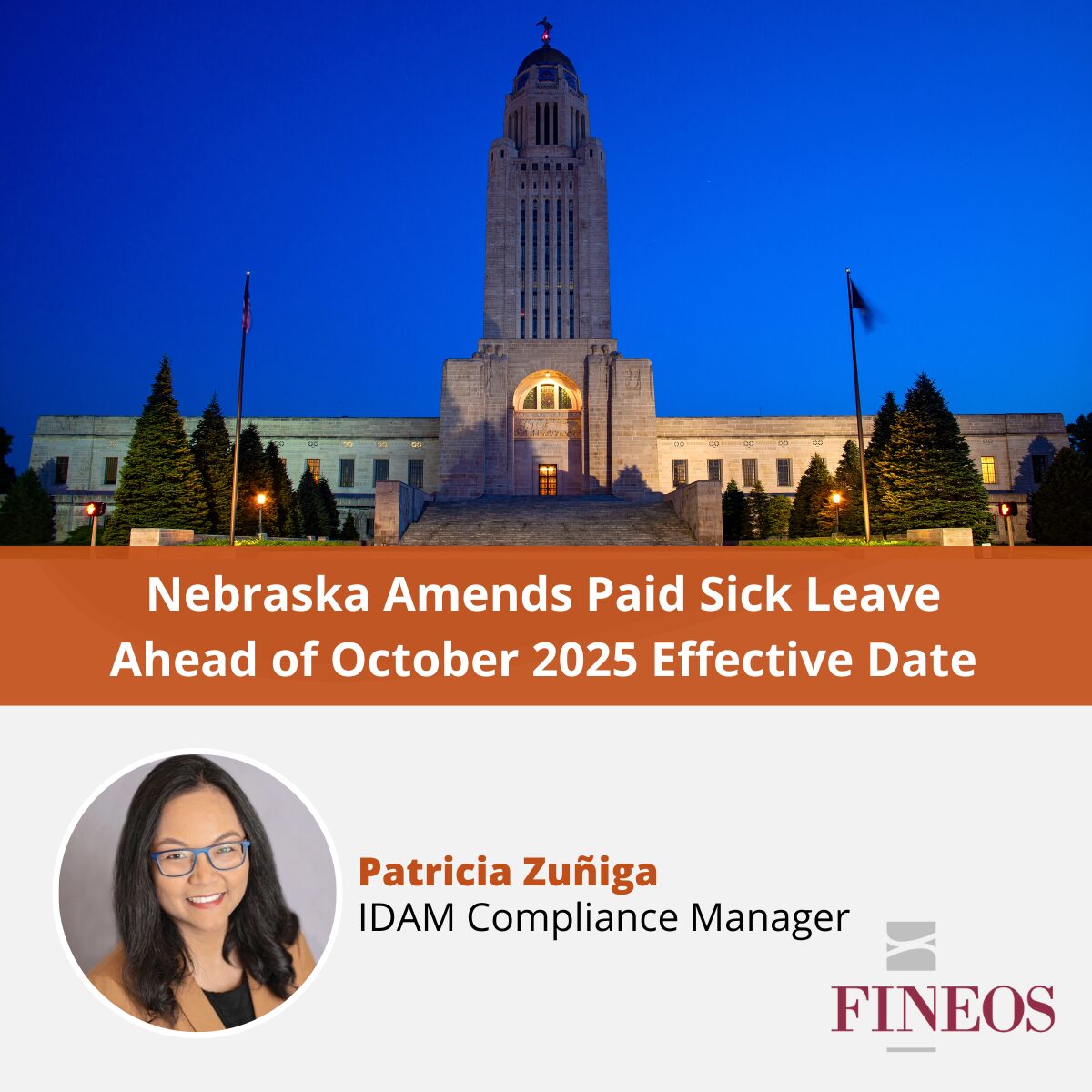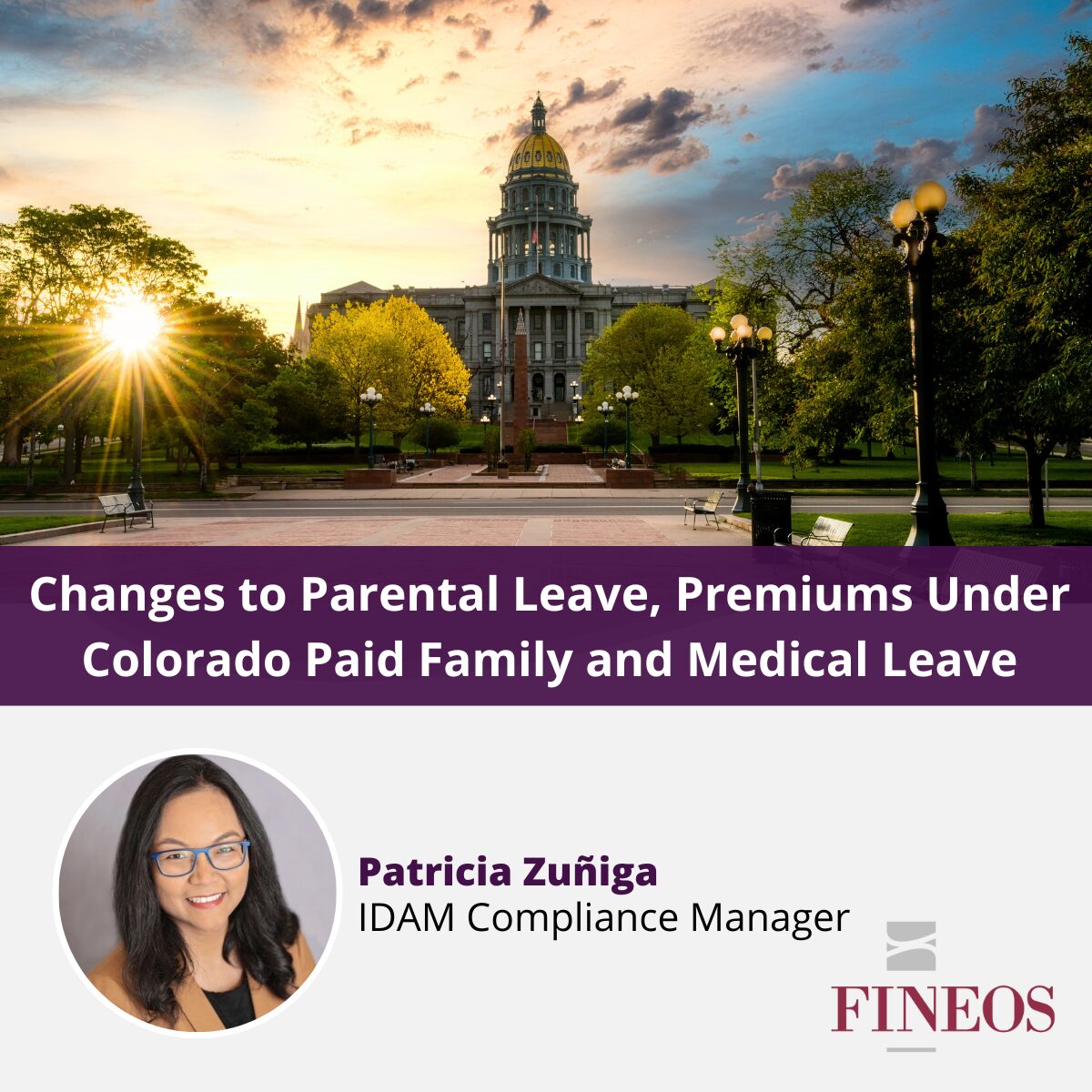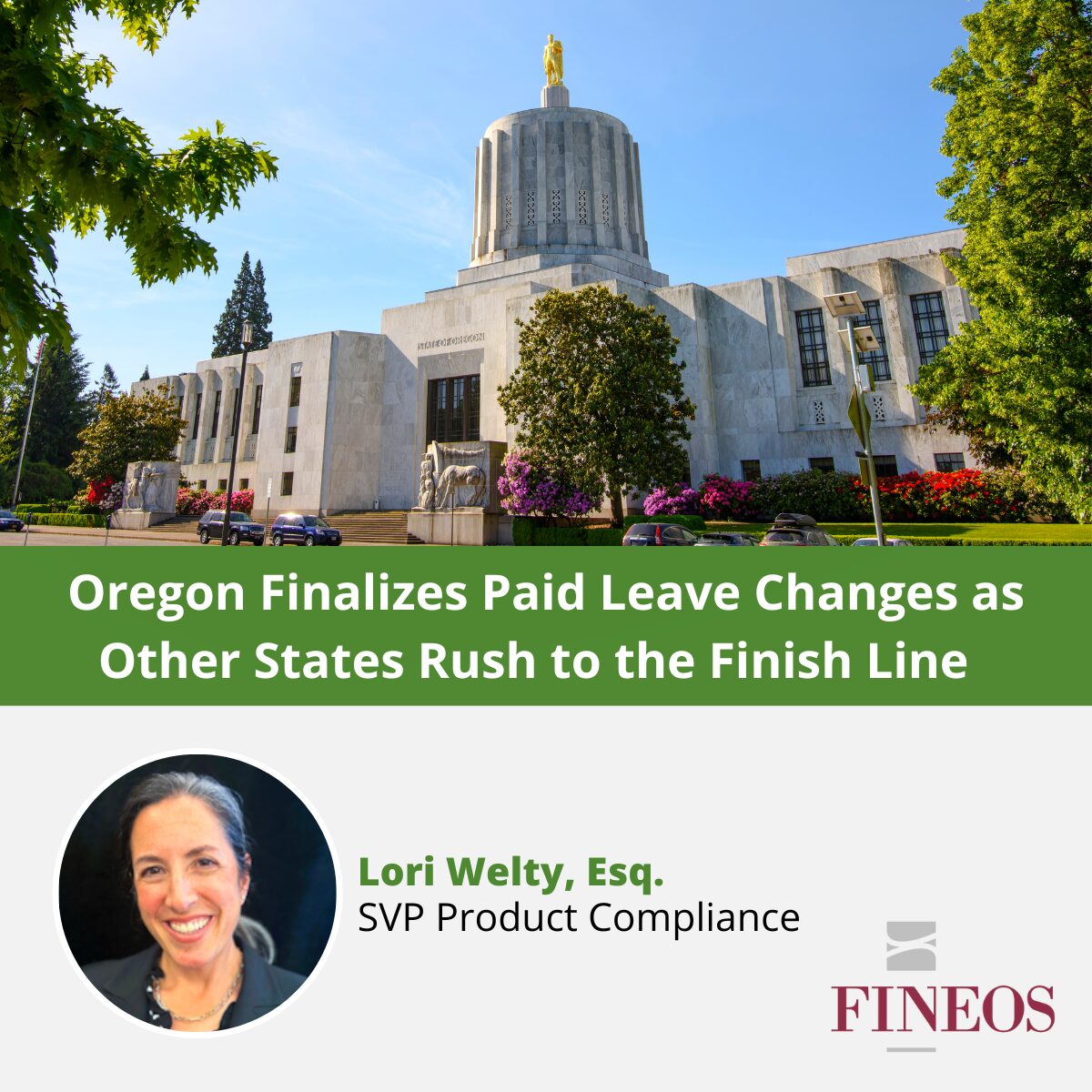On July 11, Gov. Janet Mills signed the state budget (H.P. 163) into law, which contains provisions creating a paid family and medical leave (PFML) program in Maine. Contributions to the program will begin on January 1, 2025, and employees may begin receiving benefits on May 1, 2026, unless a postponement of benefit payments no longer than 3 months is deemed actuarially necessary. Maine is the latest state to pass a PFML program with benefits going live in 2026, in addition to Maryland, Delaware, and Minnesota.
Details of the Maine PFML program
Covered Employers: Most employers and governmental entities that employ at least one individual in Maine must provide PFML to eligible employees through the state-run program or a private plan.
Eligible Employees: To be eligible, employees must have earned at least 6 times the state average weekly wage ($1,103.71 for 2023, or a minimum of $6,622.26 total – subject to change in succeeding years) during the employee’s base period. Employees of the federal government are not covered. Self-employed individuals may opt into the program.
Employees’ Covered PFML Leave Reasons:
- Medical leave: an employee’s own serious health condition
- Family leave: caring for a family member with a serious health condition, qualifying exigency leave, bonding with their child during the first year after the birth, adoption, or placement of the child, safe leave (leave from work because of violence, assault, sexual assault, stalking, or other abusive acts to protect the applicant or applicant’s family member), organ donation, or military caregiver leave
Amount of Leave: Each benefit year, an employee can take a maximum of 12 weeks of leave for medical leave, family leave, or a combination of all allowable leave reasons. Employees can take continuous or intermittent leave in increments of at least 8 hours or on a reduced leave schedule otherwise agreed to by the employee and the employer.
Covered Family Members: Maine PFML permits an employee to take leave for a spouse, domestic partner, child, parent, grandparent, grandchild, sibling, or any individual with whom they have a significant personal bond that is or is like a family relationship, regardless of biological or legal relationship.
Premiums: Beginning January 1, 2025, employers must collect and pay premiums to the state on a quarterly basis, unless they have a private plan. The total premium rate is yet to be determined, but will not be more than 1.0% of wages, subject to the Social Security tax wage cap.
Employers and employees are each responsible for 50% of the annual premiums unless the employer chooses to cover the entire amount. Employers with fewer than 15 employees can invoke a small business wage exclusion to lower the premiums due. The rates will be adjusted by the state beginning January 1, 2028. Employers who do not remit premiums as required will be assessed penalties in addition to paying for the benefits paid to its employees for whom it failed to make contributions.
Benefit Calculation: The weekly benefit amount is the sum of: (1) 90% of the employee’s average weekly wage (AWW) up to 50% of the state’s AWW; and (2) 66% of the employee’s AWW that exceeds 50% of the state’s AWW, up to a maximum weekly benefit equal to the state’s average weekly wage. Medical leave benefits are not payable during the first 7 calendar days of the leave, but an employee may use other employer-provided paid leave during the waiting period.
Concurrency: Leave taken under PFML will run concurrently with leave under the federal Family and Medical Leave Act, if the leave meets the requirements of both laws. An employer cannot require the use of accumulated sick, vacation, or personal time before an employee can access PFML benefits.
Employer Notice: Employers must post a PFML workplace notice and provide written notice of PFML rights to each employee 30 days after the time of hire. The notice posted must be in English and each language other than English that is the primary language of 3 or more employees of that workplace, if such notice is available from the state. Employers who fail to provide notice to its employees as required will be subject to civil penalties.
Job Protection: An employee who has been employed for at least 120 days and takes leave under Maine PFML is entitled to be restored to their previous position, or to a position with equivalent benefits, pay, and other terms and conditions of employment. An employer cannot retaliate by discharging, firing, suspending, expelling, disciplining, threatening, or discriminating against an employee for exercising their rights under the PFML law.
Maintenance of Insurance Benefits: Employers must continue any employment-related health insurance benefits during an employee’s leave at the level and under the conditions that coverage would have been provided if the employee had continued working continuously for the duration of leave.
Private Plans: An employer can satisfy the requirements of the PFML law through a private plan approved by the state Department of Labor. The benefits, leave durations, and protections provided to covered employees must be substantially equivalent to the benefits to which their employees are entitled under the state’s PFML program. Private plans can be self-insured or fully insured. Additionally, the state will determine the annual costs arising out of the administration of private plans, and private plan employers will have to reimburse the state for these costs.
How is FINEOS helping carriers and employers prepare for paid leave programs?
FINEOS will be ready to administer this new leave law by its effective date. Using modern insurance technology solutions like the FINEOS Platform can help insurance carriers remain agile and competitive when leave legislation is passed. Learn more about how a modern, integrated disability and absence management (IDAM) solution can help your organization adapt to sudden changes and remain in compliance.


